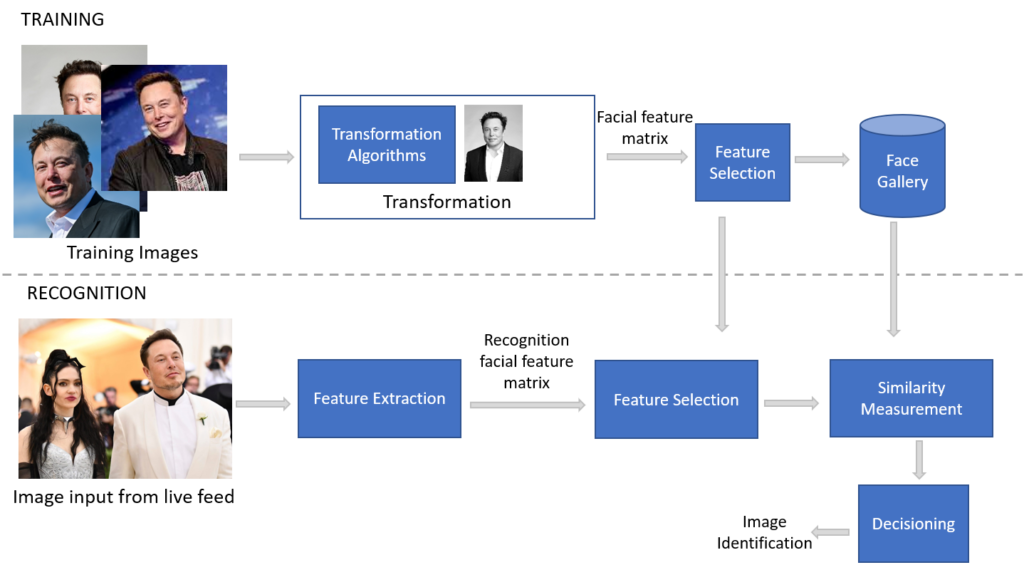Facial Recognition for Indian Fashion Retail
Industry captains of the fashion retail industry in India are starting to get curious about deep-tech. One element being facial recognition. Not much has happened yet, though opportunities abound and there are some lessons to be learnt from other retail verticals. In other retail verticals, most of the use cases revolve around loss prevention, and some around customer experience.
The fashion retailers, will need to focus more on the customer experience, than the other easier to grab inward focused use cases. Let us consider some of the use cases and some implications.
One key raw material element for the success of this technology is facial data annotation. It is about recognizing the facial features, and expressions. As one can imagine, the algorithm needs to collect a large number of data points, from a large number of images to “recognize” and “understand”. This implies that the recognition is difficult with just still images. Even with video, rapid use of frames from the video is required. This throws a challenge, but we will visit that in a while.

Customer Experience
Retailers, in some verticals, are using this technology to identify customers as they enter the store. This information is then used to personalize the shopping experience. For example, retailers may use facial recognition to identify customers and make personalised recommendations for a product. These recommendations can be based on age, gender, body size, body shape etc. When these data and combined with other external factors (e.g. weather or season), the recommendations can turn out to be potent.
The recognition algorithm can tie with the CRM database and then open up a few more possibilities, e.g.
- Loyal, or repeat customer identification can add a certain warmth, and personalization of service. The product recommendations (based on known likings or previous purchases) can improve and lead to specific and custom offers.
- Taking a step further, customer segmentation along with how customers interact with products, or reading heat map on the store floor can provide a unique set of usable behavioural data. This will provide input towards other areas e.g., visual merchandising and store planning. These can only improve sales and customer loyalty.
Customer Interaction
A adjacent areas to customer experiences and interactions is customer complaints. These rough situations often need empathy and supervisory assistance. Mood and emotions can be read often through facial expressions. If sound (voice) is captured, together with the images, then escalations at a store can often be diffused.
Another possible use case is in security and access control, to prevent shrinkage. By using facial recognition, using previous data, or matching with external data, shoplifters can be identified and prevented from entering the store.
Similarly, as facial recognition can be used to enable staff access (by role and responsibility) , it can be used to restrict customer access to stockrooms and back offices.
Facial Recognition Challenges
The use of facial recognition technology in retail (not just fashion retail) does bring in a few challenges.
- The first is around the rising concerns about data privacy and security. Retailers must ensure that they are collecting, storing and using customer data in compliance with relevant laws and regulations. Additionally, retailers must also ensure that they have robust security measures in place to protect customer data from unauthorized access or breaches.
- The second other area, which makes retailers hesitate is the cost of equipment. Till about the recent part, the quality of video imaging was a major factor in the success of facial recognition. This is because data annotation of a face (as mentioned) earlier needs many data points, and a large number of images for the software system to learn from and then use. But now, the use of developed and advanced AI takes the dependency away, to some extent, from high priced cameras and move it to the software end.
- Now that the software exists, there aren’t too many live cases. This is because not enough implementations happened and there is no ready made product for these uses cases. It just is custom software so far.
… and the future
In India, use of deep tech, and especially around facial technology in the fashion retail industry is limited at best. However, a few studies indicate the potential for growth in this area. A MarketsandMarkets study estimates that the facial recognition market in India will grow from $1.1 billion in 2020 to $6.8 billion by 2025, at a CAGR of 44.4% during the forecast period. A study by Technavio research firm estimates that the facial recognition market in the retail sector in India will grow at a CAGR greater than 26% during the forecast period. How quickly the fashion retail industry actually adopts, is yet to be seen.
In Conclusion
In conclusion, facial recognition technology can rapidly change the nature of fashion retail in India. It can make significant impact in dramatically personalizing customer experience, improving customer service, gather data on customer behavior and preferences, and improve retail bottom-line and improve security. While the benefits of facial recognition technology are significant, retailers must ensure that they are collecting, storing and using customer data in compliance with relevant laws and regulations. Additionally, retailers must also ensure that they have robust security measures in place to protect customer data from unauthorized access or breaches.